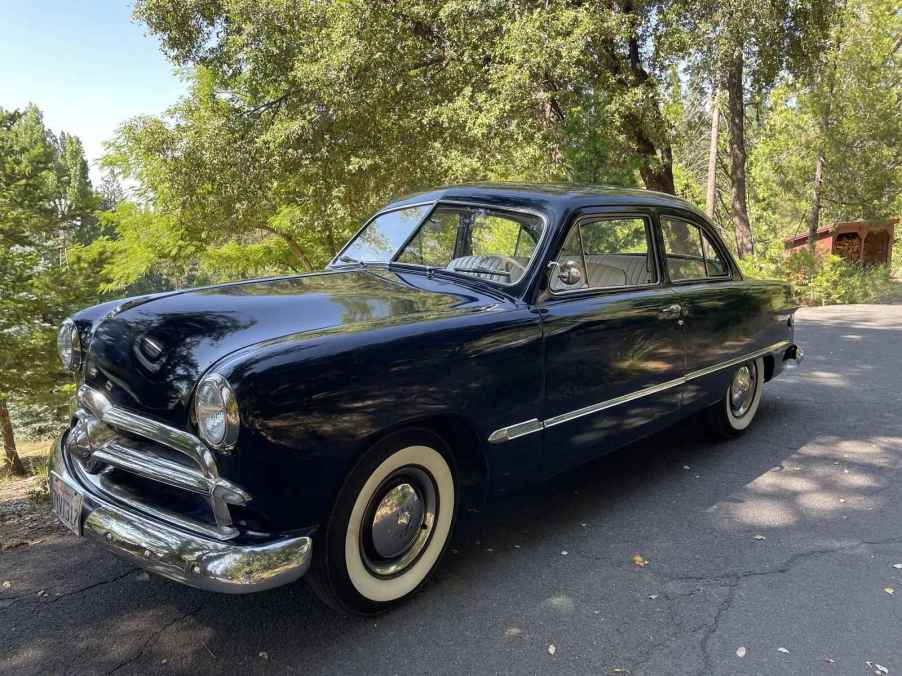
We’re Shuddering Over Morbid ‘Murderabilia’ Cars
Celebrity cars, movie cars, and classic cars tend to have devoted fans and followers. For people engrossed with ‘murderabilia,’ or collectibles associated with violent crime, it turns out there are plenty of morbid “murder cars” to pore over. We’re shuddering over three examples.
Ted Bundy’s 1968 Volkswagen Beetle
As one of the country’s most infamous serial killers, Ted Bundy averaged “a murder a month” from 1974 to 1975. While studying at Washington State University, he volunteered at a crisis hotline and claimed not to own a car. As news of a serial killer on the loose broke, his coworker, Ann Rule, found similarities between descriptions of the killer and Bundy. They even shared the same first name. However, Ann figured that Bundy couldn’t be the murderer since the killer drove a tan VW Beetle. Ann often gave Bundy rides home.
As it turned out, Bundy was indeed using his 1968 Beetle to kidnap, maim, and murder his victims. Bundy removed the passenger seat and right interior door handle to make it easier to trap and hide his victims. He often knocked them out and handcuffed them to the interior frame. Without a passenger seat, passersby couldn’t easily see the victim. Bundy sometimes killed victims in the vehicle or used the Beetle’s headlights to provide him with better lighting.
Bundy was somehow able to avoid arrest and incarceration multiple times. After eluding police not once but twice after capture, Bundy went into final custody in 1978. Since Bundy sold his murder car when he suspected heat, police recovered the 1968 Beetle from the then-owner and found it to be full of criminal evidence. While Bundy confessed to 30 murders, it’s suspected he killed more than 100 people.
In 1980, Ann Rule authored “The Stranger Beside Me,” recounting her interactions with Bundy. She would describe how she looked at BMV records and was mortified to discover that the storied murder car was indeed registered to her former coworker.
The Bug is currently on display at Alcatraz East Crime Museum in Pigeon Forge, Tennessee.

Ed Gein’s 1949 Ford
Ed Gein’s macabre “style” inspired legendary horror film characters, including Norman Bates from “Psycho,” Leatherface from “Texas Chainsaw Massacre,” and Buffalo Bill from “The Silence of the Lambs.” Known for his obsession with totems, Plainfield, Wisconsin-based Gein would either kill or rob graves to create household items, including a lampshade from human skin and bowls out of skulls.
Gein’s 1949 Ford sedan gained notoriety after his arrest in 1957 when it was discovered that he used the car to transport the bodies of his victims and the remains exhumed from local cemeteries.
Following Gein’s capture, the contents of his home, including the vehicle, were auctioned off. His home was formally destroyed (burned down) to avoid it becoming a tourist attraction. The murder car became a disturbing attraction at county fairs, drawing crowds fascinated by ‘murderabilia.’ The Ford seems to have since disappeared, and its whereabouts remain, at least publicly, unknown.

Jack Kevorkian’s 1968 Volkswagen Type 2 Bus
Jack Kevorkian, a controversial figure in the assisted suicide movement, used a Volkswagen Type 2 as a mobile clinic for his euthanasia practices. The VW bus, famously known as the “Deathmobile,” was where Kevorkian conducted his practice during the 1990s.
Equipped with medical apparatus and his homemade “Mercitron” machine, the VW bus became a symbol of his campaign.
Kevorkian would be convicted of second-degree murder of about 130 people. He spent eight years in prison. He was released early after promising to never perform an assisted suicide again. Jack Kevorkian died of natural causes in 2011 at age 83.
According to NBC News, Kevorkian’s friend and attorney said the doctor had given the bus back to the dealer to scrap in 1997 and did not intend to ever sell it. However, the “murder” car remained in various private possessions and went up for sale on eBay in 2010. eBay quickly removed the post, stating that the listing violated site policies. Other people have owned it since, including Les Gold and Zak Bagans.




